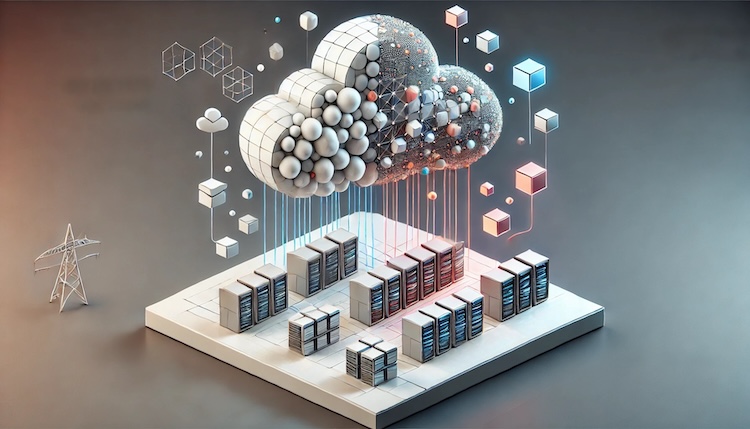Understanding Serverless and Cloud Computing: What’s the Difference?

Imagine you’re running a lemonade stand. Some days, customers line up around the block, and other days, it’s just you and the lemonade. Now, you need to decide if you should invest in a big lemonade machine that churns out gallons of lemonade continuously or get a nifty machine that only makes lemonade when someone orders. This scenario perfectly illustrates the difference between cloud computing and serverless computing. Let’s break it down in simple terms.
What is Cloud Computing?
Think of cloud computing as having that big lemonade machine. It’s like using the internet to store data, run applications, and use various services without having to buy or maintain physical computers and servers. Companies like Amazon Web Services (AWS), Microsoft Azure, or Google Cloud Platform offer these services.
In cloud computing, you typically rent virtual machines or storage space. It’s like renting that lemonade machine. If you need more or less lemonade (computing power or storage), you can adjust your rental. But, just like maintaining that big machine, you need to keep things running smoothly and efficiently.
Types of Cloud Computing
- Infrastructure as a Service (IaaS): Renting the lemonade machine itself. You get the hardware and can set it up however you like. Examples: AWS EC2 and Google Compute Engine.
- Platform as a Service (PaaS): Renting the lemonade machine with all ingredients ready. You just make the lemonade. Examples: Google App Engine and Microsoft Azure App Services.
- Software as a Service (SaaS): Buying ready-made lemonade. You just enjoy the drink without any hassle. Examples: Gmail and Microsoft Office 365.
What is Serverless Computing?
Serverless computing is like having a magical lemonade stand where lemonade is made only when someone orders. No machine running all the time, just instant lemonade when needed.
In technical terms, serverless computing means you write and deploy code without worrying about the underlying servers. Cloud providers like AWS Lambda, Google Cloud Functions, or Azure Functions automatically scale the computing resources based on demand. You pay only for what you use, saving money if your usage varies a lot.
Key Differences Between Cloud and Serverless Computing
- Resource Management:
- Cloud Computing: You manage and maintain your virtual machines or services, including updates, security, and scaling.
- Serverless Computing: The provider handles everything. You write your code, they take care of the rest.
- Scaling:
- Cloud Computing: You might need to manually adjust resources or set up automatic scaling.
- Serverless Computing: Automatic and instantaneous scaling. Resources are allocated exactly as needed.
- Cost:
- Cloud Computing: You pay for reserved resources, even if you don’t use them all the time.
- Serverless Computing: You pay only for the exact resources you use.
- Development Speed:
- Cloud Computing: Setting up and maintaining infrastructure can be time-consuming.
- Serverless Computing: Developers focus on writing code, speeding up the development process.
- Use Cases:
- Cloud Computing: Best for steady, predictable workloads. Examples: web hosting, data storage.
- Serverless Computing: Ideal for variable workloads, like processing IoT data or running event-driven applications.
Advantages of Cloud Computing
- Flexibility: Wide range of services and configurations.
- Control: More control over setup and management of resources.
- Customization: Infrastructure can be customized to fit specific needs.
Advantages of Serverless Computing
- Cost Efficiency: Pay only for what you use, which can be cheaper for many applications.
- Scalability: Automatic scaling handles sudden demand increases.
- Simplicity: Focus on writing code without worrying about infrastructure.
Disadvantages of Cloud Computing
- Management Overhead: Managing and maintaining infrastructure can be complex and time-consuming.
- Cost: You might pay for unused resources if your workload varies.
Disadvantages of Serverless Computing
- Cold Starts: There can be a slight delay (cold start) when the function first runs.
- Complex Debugging: Debugging serverless applications can be more complex.
- Resource Limits: Execution time and resource usage limits.
Conclusion
Cloud computing and serverless computing each have their strengths and weaknesses. Cloud computing offers more control and flexibility, suitable for steady workloads. Serverless computing provides cost efficiency and scalability, perfect for variable and event-driven workloads.
Your choice depends on your needs. If managing and customizing infrastructure is key, cloud computing might be best. If focusing on code and paying only for what you use is crucial, serverless computing is the way to go.
Understanding these differences helps you make informed decisions, choosing the right solution for your projects or business. Whether you opt for the flexibility of cloud computing or the efficiency of serverless computing, both are shaping the future of application development. Embrace these technologies to create efficient, scalable, and cost-effective applications, keeping you ahead in the evolving tech landscape.